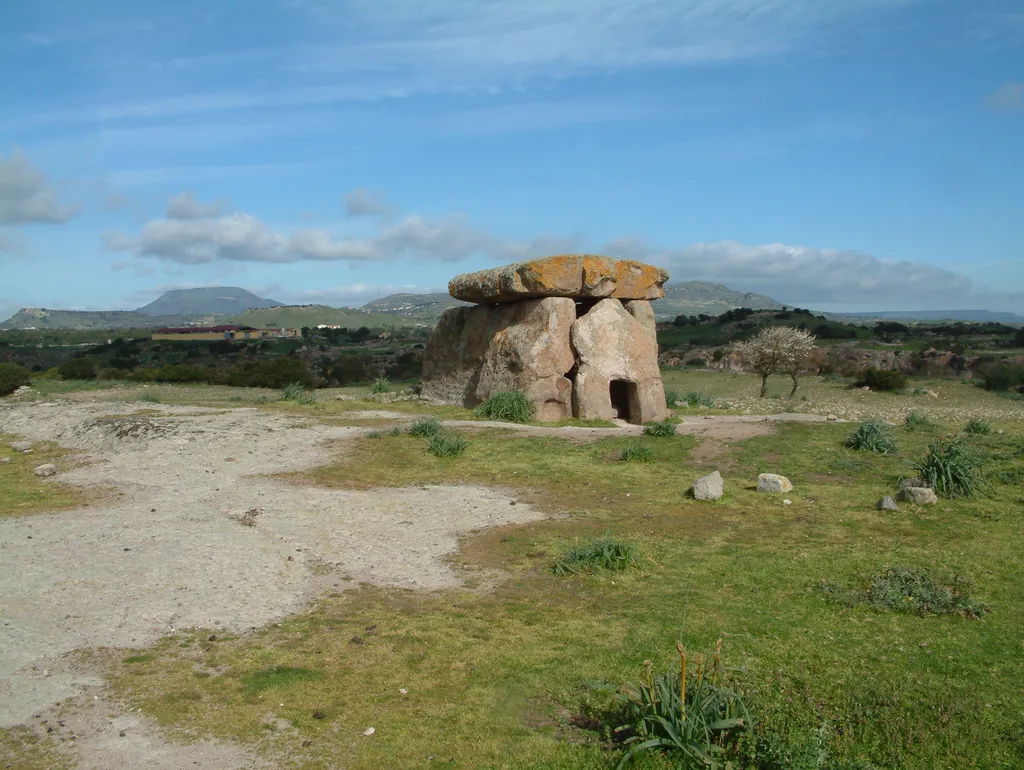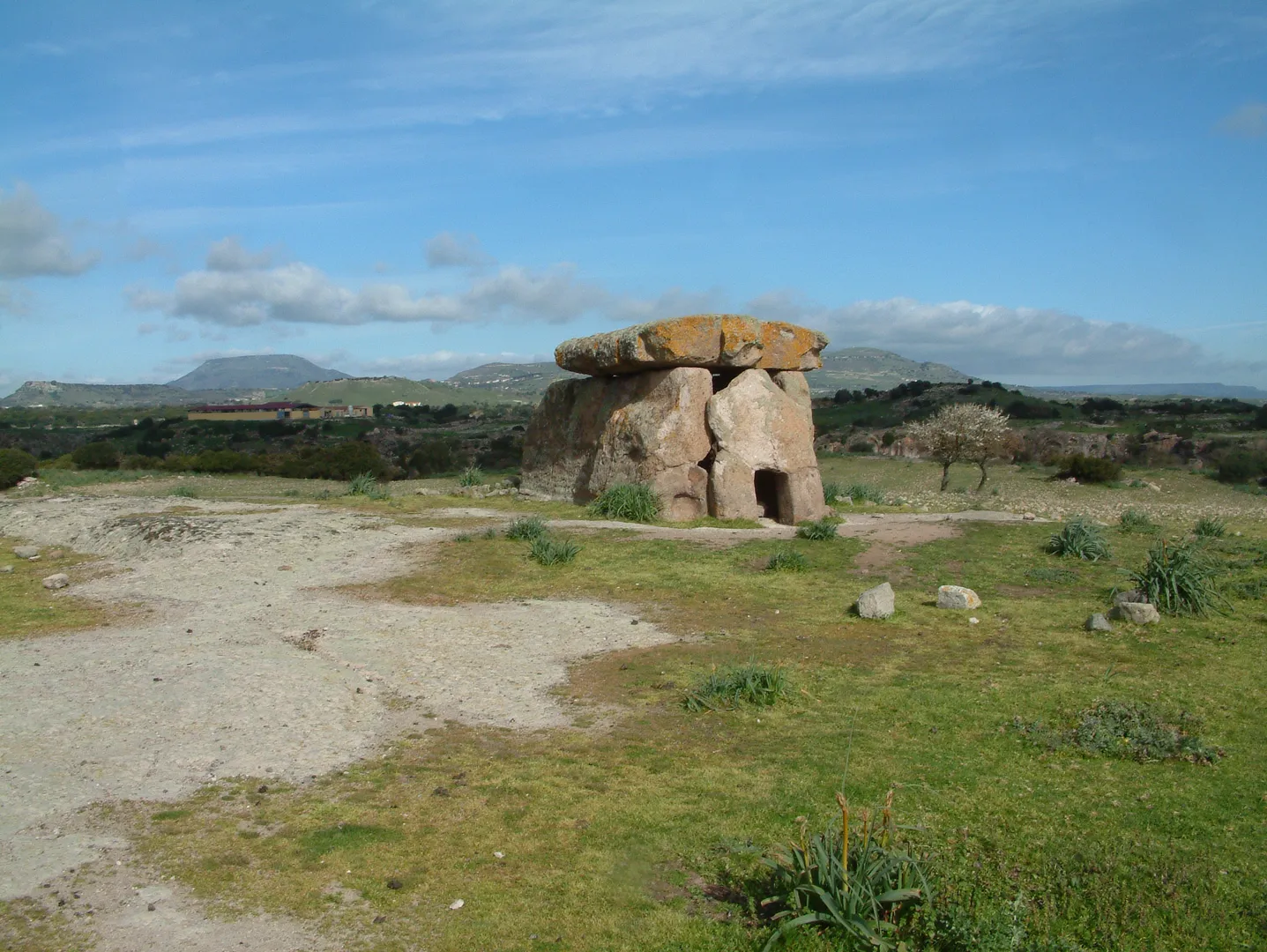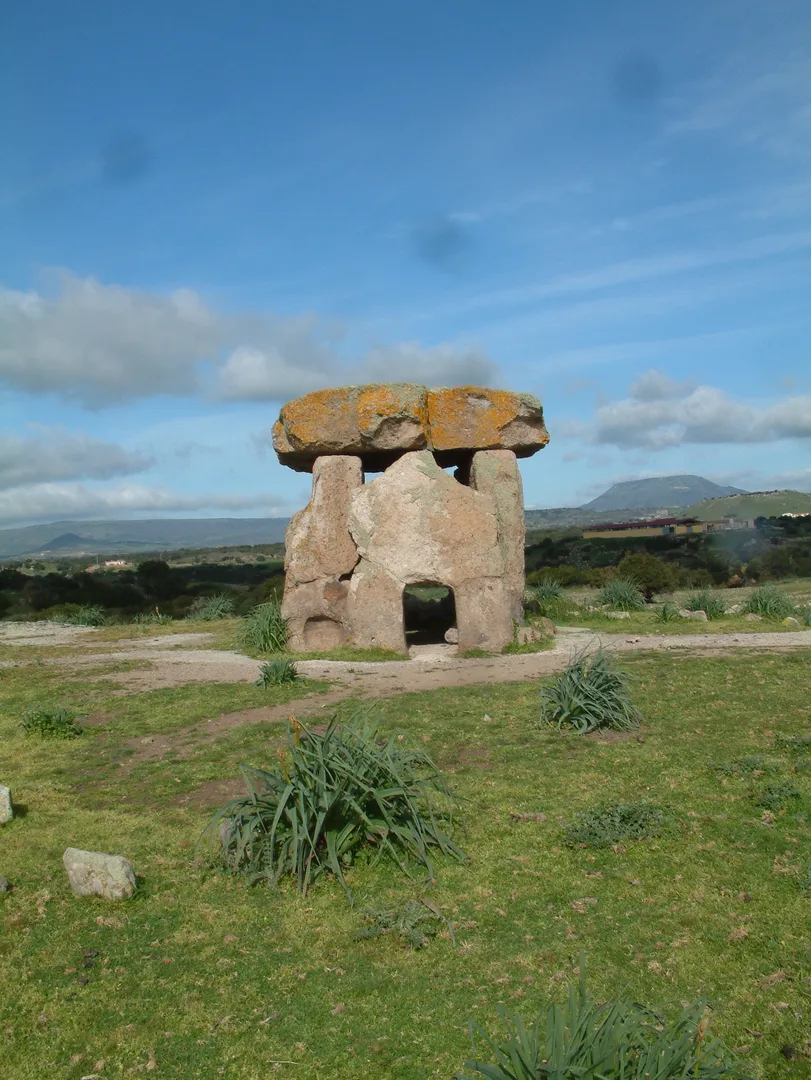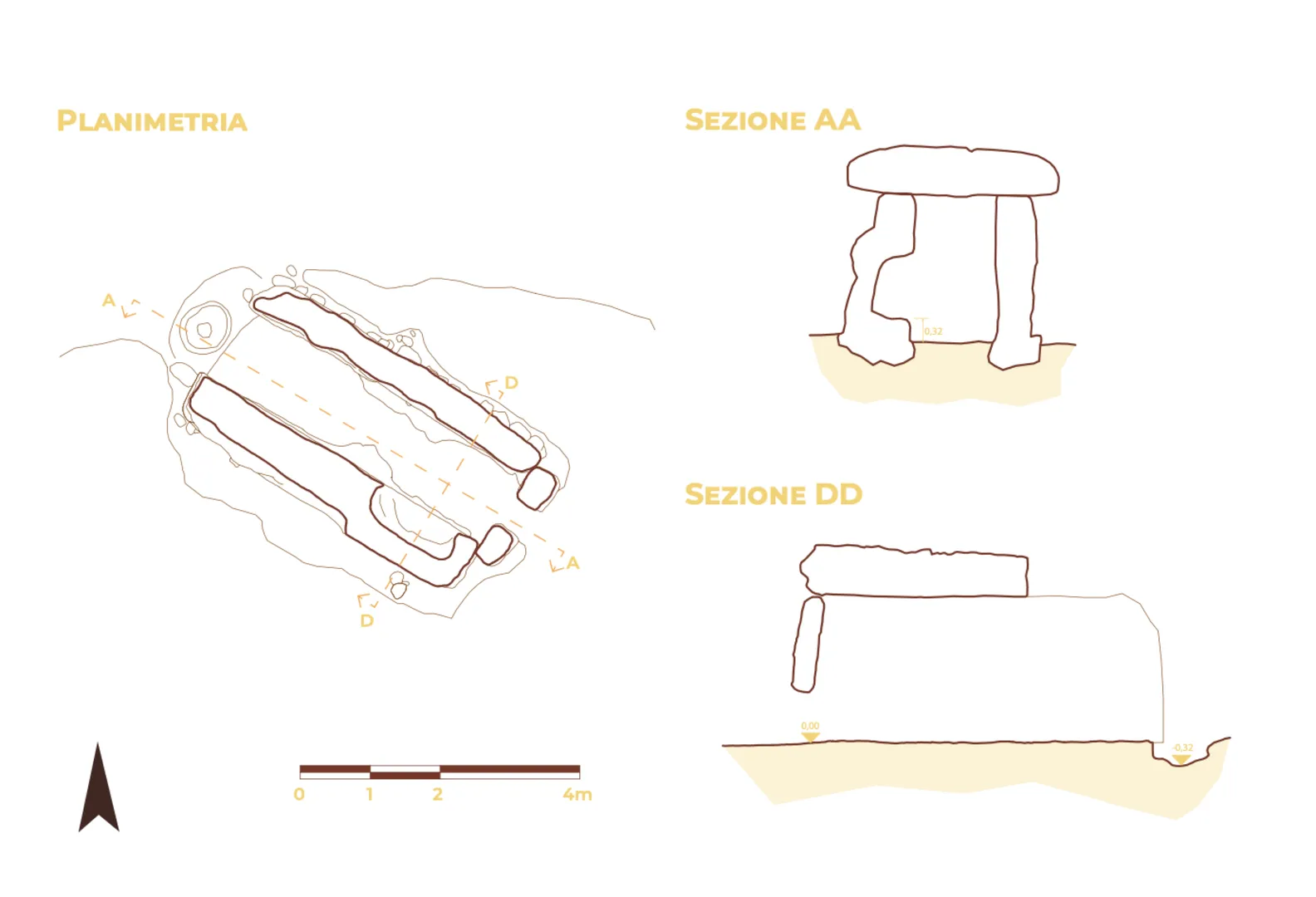Dolmen of Sa Coveccada
The most imposing dolmen in Sardinia, used as a collective tomb during the Neolithic.

Dolmen of Sa Coveccada
Dolmen of Sa Coveccada
Contact
- Comune di Mores
-
Piazza Padre Paolo Serra, 1
07013 Mores (SS) - +39797079011
- Website
Access information
From the town of Mores, follow SP47 towards Ittireddu. After 6.24 km, turn right towards the tourist signs and continue along the road for 3.12 km to a crossroads, then, as indicated by the tourist sign, turn right and go straight for 700 m to the entrance gate of the archaeological area.
The dolmen is located on a vast and bare trachytic plateau with sparse Mediterranean scrub bushes, clearly visible from every spot along an ancient transhumance path.
In the area there are other prehistoric monuments, closely connected with the dolmen: at 140 m NW, a menhir is documented, currently lying on the ground, and a small necropolis of domus de janas can be found 170 m to the S.
First cited in 1905 in a paper by Giacomo Calvia, it has been the subject of publications by several authors, including Oliver Davies and archaeologists Antonio Taramelli, Giovanni Lilliu, and Enrico Atzeni. The excavation carried out by Paola Basoli during the 2011 restoration of the monument helped identify, at the back of the dolmen, a step carefully carved into the rocky floor plan, that supported the original closing slab that is no longer available. Inside a small sub-circular pit at the base of the step, the excavation unearthed the remains of ancient ceramics and a fragment of a fairing vase attributed by the scholar to the human presence at the monument during the Copper Age.
However, based on the data available for other monuments falling into this monumental category (the dolmen of Motorra-Dorgali, the dolmens of Ciuledda and Alzoledda-Luras), the construction of the dolmen is attributed to the 4th millennium BCE.
The monument stands out among the Sardinian megalithic structures for its exceptional size and peculiar elements, such as the access door carved on the front slab.
The simple dolmen is made of trachytic tuff and consists of a rectangular chamber (4.20x1.20x2 m), with a NW-SE longitudinal axis, marked by three large masterfully carved slabs, one on each side and one on the front, while the rear orthostat has now disappeared, perhaps shattered and replaced by local shepherds with a pile of pebbles.
The door to the room faces SE. At ground level, the front plate features a central sub-rectangular access door (0.50 x 0.66 m). Considering the presence of a carved panel (a port de four) the dolmen can be compared with numerous monuments located outside the island, especially in France and Spain.
To the left of the entrance (for those looking from the outside), the slab serving as the SW wall includes a small round niche at ground level. The sub-rectangular cover slab (3.25x3x0.60 m) weighs over 25 tons and has a large transverse crack, so only half of it is still visible, and on the front side an intentional cut at right angles removed the original eastern corner of the slab. In the inside, on the SW orthostat, at the entrance, there is a rectangular niche (1.25x0.88x0.50 m) about 30 cm above the ground.
Bibliography
- Cicilloni R. 2009, I Dolmen della Sardegna, Mogoro.
- Cicilloni R., Doro L. 2023, Il dolmen di Sa Coveccada, Mores (SS), in G. Tanda, L. Doro, L. Usai, F. Buffoni (eds.), Arte e architettura nella Sardegna preistorica. Le domus de janas (candidatura unesco 2021), Cagliari: 164-167.


